- Home
- James Patterson
Invisible Page 11
Invisible Read online
Page 11
That’s the last thing I wanted to hear, of course, but there is something in her tone, something to the glint in her eyes, that tells me I’m still in the game.
“But their deaths were no accident,” she says. “These were homicides. And these were the most ingenious, meticulous, and cold-blooded murders I’ve ever seen.”
47
“I WANT to make sure I’m on record telling you this,” says Dr. Janus. “If I’d received these bodies in a routine fashion, without having spoken with you about them first, I likely would have come to the same conclusion as these local MEs did—that the manner of death was accidental.”
She opens the first file and passes around copies of photos and forms. “We have Curtis Valentine of Champaign, Illinois, male, age thirty-nine. And Joelle Swanson of Lisle, Illinois, female, age twenty-three.” Dr. Janus continues in a dry, raspy voice, as if she is reading something she’s read a thousand times before. “In each decedent, there is clear soot deposition on tracheal mucosa and the dorsum of the tongue. The soft tissue and blood in the organs was cherry red, which is usually evident with carboxyhemoglobin levels above thirty percent and is therefore indicative of inhalation of toxic levels of carbon monoxide and cyanide.
“All of this evidence, as you know, is consistent with the decedents being alive at the time of the fire and inhaling smoke and other toxic chemicals—which is exactly the conclusion reached by the medical examiners in Champaign and DuPage counties.”
We all nod in agreement.
She pauses, looking at each of us for just a beat longer than is comfortable. It’s pretty hard to make the four of us uncomfortable, after the week we’ve had. It seems as though she’s assessing us.
“But you told me to dig deeper,” she says. “So I did things medical examiners wouldn’t ordinarily do. For example, I examined the soot in their mouths and throats and lungs more closely. I analyzed the toxic gases present. It’s usually carbon monoxide and hydrogen cyanide, of course. Those are usually the main culprits, and any damage caused by other gases is difficult to separate from direct particulate injury. That’s the logical assumption. But when I dug deeper, guess what I found?”
“What?” I ask, like an eager student, wanting the gory details to justify my original hypothesis—but not wanting them, at the same time, knowing that my sister was one of his victims. I don’t know which emotion is causing the buzz in my head, the tremble in my limbs.
“The chemical residue in their lungs and throat—it’s not what I would have expected, based on someone lying in their bed, surrounded by fabric and polyurethane and carpeting and books. What I found was an unusually high presence of sulfur dioxide,” she says. “Much higher than you’d ever expect from a normal house fire. It’s like…well.” She laughs, as if apologizing.
“It’s like what?” I ask.
She shakes her head. “It’s like they inhaled the smoke coming off a tire fire.”
“A tire fire?” I repeat.
“Correct.” She gives me a grim smile. “And I saw nothing in the reports or background information that suggested any burned rubber at the scenes.”
“No, of course not,” says Denny Sasser.
“And that’s not all,” says Janus. “There isn’t evidence of burning inside the trachea and lungs. The smoke they inhaled wasn’t hot.” She taps the table with a manicured fingernail. “If they’d inhaled smoke from the fire, it would have scalded their trachea and lungs.”
“So—what are you saying?” asks Books.
Dr. Janus shrugs. “Off the record, I would say that someone must have created this kind of smoke and forced them to inhale it, to make it appear that they were alive at the time of the fire—so that a medical examiner would conclude that smoke inhalation caused their death. But these individuals didn’t inhale the smoke from their house fires. The smoke came from a different source. By the time their houses were burning, they were already dead.”
It’s as if the entire room collectively releases a tightly held breath. The composition of the smoke, and the lack of heat, eliminate any possibility that Curtis Valentine and Joelle Swanson breathed the fire smoke. That, alone, refutes the findings of the coroners in Champaign and DuPage.
I note, for the first time, the drumming of my fingers on the tabletop—not idle, distracted tapping, but quaking spasms. Hold steady, I warn myself. You need to hear this. Don’t think about her. This isn’t about Marta. It’s about catching a killer.
“I assume that’s not all you have to tell us,” says Books.
Lia Janus lets out a nervous chuckle. “No, that’s not all,” she agrees. “If that were all, then last night I wouldn’t have had nightmares about my work for the first time in twenty years.”
48
WE LISTEN with anticipation to the next phase of Dr. Olympia Janus’s findings. But make no mistake, we have already scored a major victory. The conclusions reached by the local coroners have been tossed out the window.
So why don’t I feel like celebrating? Because, under the category of careful-what-you-wish-for, Dr. Janus is about to give us some very specific details about how Curtis Valentine and Joelle Swanson died—and thus, how my sister was murdered, too.
Each of the four members of our team, in his or her own way—eyes downcast, shoulders closed in, feet tapping—is reacting the same way right now, even without the personal connection I have. We already know the heights of his brilliance. Now we’re going to learn about the depths of his depravity.
Janus passes around glossy photographs that, she explains, are close-up photos of the upper thigh of Curtis Valentine and of the areas immediately surrounding the elbows and knees of Joelle Swanson.
“Look, here, at the splits in the tissue,” she says. “Splits, in and of themselves, are normal in a death like this. Heat from a fire will cause splits in the skin as the flames cause the outer layers to fry and peel off. After that, the thicker dermal layer begins to dehydrate, shrink, and split. This splitting occurs parallel to the muscle fibers, do you see that?”
I guess I do. It’s hard for someone like me to make sense of these photos. But it looks like the skin has split open vertically to reveal muscle in the same direction, like the husk stripped down to reveal the corn.
“That’s the key,” Janus continues. “The skin splits caused from a fire’s heat will be parallel to the muscle fibers. When the splits are caused by lacerations—a knife, some kind of slashing wound, what have you—the lacerations will typically be across muscle fibers. That is a key way that an autopsy will reveal foul play, by comparing the laceration’s direction to the muscle fibers. Do you follow?”
“Yes,” Books says. “So these skin splits are parallel to the muscle. They look like they resulted naturally from the heat of the fire.”
“Correct. But upon closer scrutiny, these lacerations are quite precise. And by precise, I mean of surgical quality. They are even and symmetrical. They are simply too perfect to be natural.
“And he was clever,” she adds. “He chose his spots wisely. These lacerations occur in areas of the body that were nearly completely consumed by fire, leaving little but a greasy layer of flesh over charred bone, or in areas riddled with natural splits in the skin. Whoever did this had solid medical knowledge and a steady hand. Your subject sliced them up, and he did so right where he knew we wouldn’t discover it.”
I catch my hands trembling again and lace my fingers together to calm them. The slow buzz between my ears, the gentle hum, rises in volume, like the charge off a high-voltage battery.
“I’m sure you’ve heard of the pugilistic attitude that bodies assume when burned, yes?” Dr. Janus asks. My mind flashes back to Marta, burned up into a boxer’s stance—knees and arms bent, a defensive crouch. I close my eyes and take deep breaths.
“In fire-related deaths, this heat-induced contraction results in exposure of the peripheral joint spaces like the wrists, elbows, and knees, and there is often charring of the articulating surface of the bo
nes. Deterioration of bone here would not be unusual. But look here,” she says, pointing to Joelle’s elbow joint. “Here, I found that a portion of the bone was missing, while the depth of char is consistent with the surrounding area, as if some of the bone had been removed prior to the fire. The surrounding tissue in that area was profoundly burned, but shows evidence of deep bone-level skin splits.”
“Translation, please,” says Books.
“Sorry. I’m saying the subject cut through their skin, moved aside their muscle tissue or sliced through it with methodical vertical cuts, and shaved a chunk of their bone off before they died. Basically, he cut them to shreds on their elbows, wrists, and knees—he sliced skin and he removed bone. Imagine someone performing knee surgery on you without anesthetic, while you’re awake, and you get some idea of what these people went through. Except it was both knees, both elbows, and both wrists—so multiply the experience by six.”
“Jesus, Mary, Mother of God,” Denny Sasser whispers.
“And he knew it would be nearly impossible to detect, because these areas of the body are some of the parts that are most exposed in a fire.”
Somehow, my hands have split apart again, resuming their spasmodic quaking, and only now do I realize the lighting in the room has turned a blinding shade of white, and the buzzing in my head has reached a dizzying volume, the odor in the air turning foul and putrid—
“Are you okay?” says Dr. Janus, presumably to me.
My face is sizzling, my stomach in revolt—
“Emmy,” says Books.
“I forgot,” says Janus. “There’s a personal connection—”
“No,” I hear myself say. “Keep…going…there’s more…isn’t there?”
“There’s more. In fact, this is where the two deaths diverge,” says Janus. “Believe it or not, this is where it gets worse.”
49
“SO HE didn’t do the same things to the two victims?” Denny Sasser asks.
“Well, not entirely,” says Olympia Janus. “Each of them inhaled that smoke, however he accomplished that. And the very painful slicing and bone-cutting at their limb joints was present in each victim. But yes, at this point, the examinations of the two bodies diverge. Let’s start with Curtis Valentine.”
She pulls out two sets of photos from her file. “I found evidence of injuries inflicted at his temporal bones—his skull, basically. You see there are two skull fractures, here and here,” she says, pointing to either side of the skull just behind the temple. “Is that unusual? Not at all, for someone burned in a fire. Heat-related fractures commonly occur in the temporal bone just behind or below the temples. They are normally jagged, radiate from a center point, and may cross those suture lines. For all intents and purposes, these fractures look like normal heat-related, postmortem fractures—each of the two fractures is jagged, and each radiates from a center point.
“However,” she continues, tracing the line of fracture with the eraser of her pencil, “look at the center points of each of these two fractures. They are identical in diameter. Identical. What are the odds that two heat-related fractures in the same individual would have identically sized center points? A diameter, by the way, that is consistent with your average ice pick.”
“You think he punctured Curtis Valentine’s skull twice with an ice pick,” says Books. “In locations where a coroner would blame the fractures on the heat from the fire.”
“Exactly. And in a location where you would expect to find skin-splitting, too. And while we’re on the topic of skin-splitting—just like he did with the knees and elbows and wrists, here at the skull he kept the incisions on the skin parallel to the muscle tissue, so it would mimic a heat-related splitting.”
The room is quiet a moment. Everyone’s trying to keep up with our learned doctor, and everyone’s trying to digest this information without losing their lunch.
“Curtis Valentine was scalped,” I say, my voice flat.
“Exactly,” she says. “Our subject punctured Mr. Valentine’s skull in two places to get hold of the skin; then he tore off the skin in patches, inch by inch, like peeling an orange. The skin flaps were left attached to the skull, and as they burned, they flaked away until the damage was easily mistaken for normal fire damage.”
“Okay,” I say, though I’m not sure if I’m saying it to myself, to steady myself, to keep a clinical focus and not think of my sister. “And was he…when this happened…was Curtis—was he…”
“He was alive during all of it,” says Janus. “The shredding of the skin at the elbows and knees and wrists, the cutting of the bone, the peeling back of his scalp—there’s evidence in the histological analysis of the tissue that there was swelling at the sites, which only happens if you’re alive.”
Don’t think about it. Don’t think about her. Think about the case, the puzzle, the solve. This isn’t personal. This isn’t about Marta—
Marta. Oh, my poor, sweet Marta—
“You’re describing torture,” says Denny Sasser.
“Torture isn’t a strong enough word,” Janus says. “Emmy? Are you okay?”
I open my eyes into my hands. I didn’t realize I’d been covering my face. I squint into the light of the room.
“Emmy?”
I spin my index finger in the air, hoping that she’ll understand that I want her to continue, because I’m not sure my voice will work anymore.
“What about Joelle Swanson?” Books asks. “She wasn’t scalped?”
“No, she wasn’t.” Lia Janus sighs. “I also ordered extensive histology on her available skin samples still capable of being tested. Her skin and muscle tissue were nearly completely destroyed by the high heat of the fire, but there are a few sections of deeper tissue on her thighs that show evidence of second-degree burns occurring prior to her death—with enough time that there was vital tissue reaction, including edema, erythema, inflammation, and hemorrhage. These preliminary burns, in my opinion, are consistent with the damage caused by scalding.”
“Scalding?” Denny Sasser asks. “As in boiling liquid?”
“Correct.” Dr. Janus clears her throat. “He burned her over and over again, but only to a second-degree burn.”
“Why stop at second-degree?”
She gives a rueful smile. “If it were a third-degree burn, all her nerve cells would have died, and there would be no pain. A large second-degree burn, on the other hand, is a constant source of agony. Have you ever been to a hospital burn unit? That kind of pain will test your sanity and your will to live.” She shakes her head. “He knew exactly how to maximize her pain.”
Books clears his throat. “So…he poured boiling water over her. He cut her at the limb joints. He filled her lungs with the smoke of burning rubber to asphyxiate her. And then he burned her up in the fire.”
Not Marta…not Marta…these things didn’t happen to her….
“That covers it,” Lia Janus says. “Listen, I’m not sure you understand what I’m saying about the unifying characteristics of these injuries. First of all, every single one of the injuries he inflicted—every single one—could be explained away as having been caused by the heat from an accidental fire. Could we convict him in court based on what I’ve told you today? No. There are too many holes. I firmly believe in what I’ve told you, but a skilled defense attorney could tie me in knots because I could never fully discount the possibility of accidental death.
“But more to the point,” she continues, “each of these acts…each of these injuries was chosen with the specific intention of causing unimaginable pain without causing death. He sliced into their bodies with the skill of a surgeon, and he didn’t hit one major artery. They didn’t bleed out because he didn’t want them to bleed out.”
She looks at each of us in turn. “I don’t know how you ever discovered this monster or connected these two murders. Whatever you did, I applaud your excellent work. Because these are the closest things to a perfect crime that I’ve ever seen. And they are also, I
must say, among the most hideous I’ve encountered. Our subject has committed unspeakable acts of torture and managed to remain completely invisible.”
Dr. Olympia Janus claps her hands down on the table and stands up.
“Catch him,” she says. “Hopefully, before he does it again.”
Denny says, “Today’s, what, Wednesday the twelfth? He’s midway through his second week on the road.”
“Right,” says Books. “Which means he’s probably staking out his next victim as we speak.”
50
* * *
“Graham Session”
Recording # 12
September 12, 2012
* * *
Hello? Hey, how are you? I’m good, I’m good.
Okay, I’m just doing my fake-phone-call ruse again, because I’m at a bar doing my favorite thing, people-watching. Do you like to do that? I think everyone does, don’t they? Isn’t it strange that almost everyone seems weird to you? But you imagine that, if the shoe were on the other foot, you would seem normal to them?
Anyway, I’m traveling again tomorrow, so I’m not really on the job tonight, but I’m going to show you an example of how I do what I do—how I draw people in, how I gain their trust, because—
[Editor’s note: a woman’s voice:] “Are you a writer?”
I’m sorry. Hey, can you hang on a second? Someone’s talking to me. Hang on a second.
I’m sorry, what did you say to me?
[Woman:] “I said, are you a writer?”
Am I a writer? Why would you ask me that?
[Woman:] “Because you seem like you’re observing people and taking notes. Even though you’re pretending to be on the phone.”
I’m not pretending to be on the phone. I’m really on the phone.
[Woman:] “Okay, sorry I bothered you.”
Hey, can I call you back? Okay…okay, thanks…bye.

 Miracle at Augusta
Miracle at Augusta The Store
The Store The Midnight Club
The Midnight Club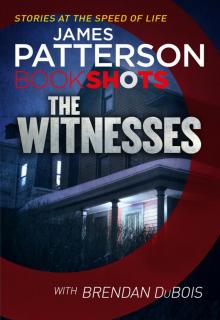 The Witnesses
The Witnesses The 9th Judgment
The 9th Judgment Against Medical Advice
Against Medical Advice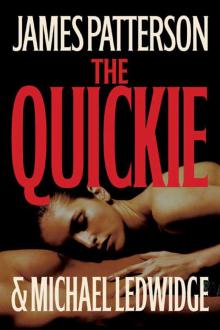 The Quickie
The Quickie Little Black Dress
Little Black Dress Private Oz
Private Oz Homeroom Diaries
Homeroom Diaries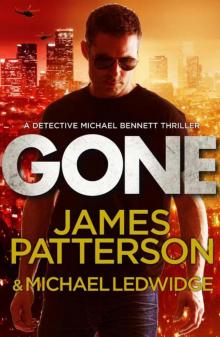 Gone
Gone Lifeguard
Lifeguard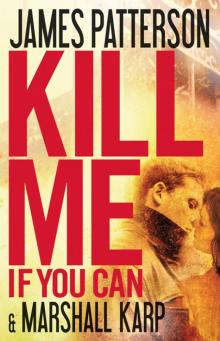 Kill Me if You Can
Kill Me if You Can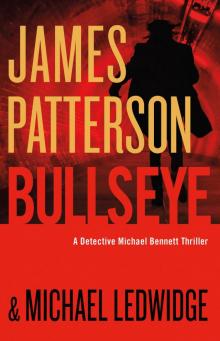 Bullseye
Bullseye Confessions of a Murder Suspect
Confessions of a Murder Suspect Black Friday
Black Friday Manhunt
Manhunt Filthy Rich
Filthy Rich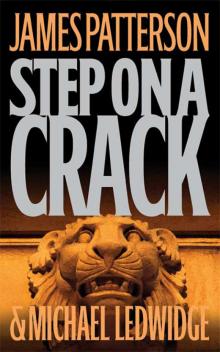 Step on a Crack
Step on a Crack Private
Private Private India
Private India Game Over
Game Over Private Sydney
Private Sydney The Murder House
The Murder House Mistress
Mistress I, Michael Bennett
I, Michael Bennett The Gift
The Gift The Postcard Killers
The Postcard Killers The Shut-In
The Shut-In The House Husband
The House Husband The Lost
The Lost I, Alex Cross
I, Alex Cross Going Bush
Going Bush 16th Seduction
16th Seduction The Jester
The Jester Along Came a Spider
Along Came a Spider The Lake House
The Lake House Four Blind Mice
Four Blind Mice Tick Tock
Tick Tock Private L.A.
Private L.A. Middle School, the Worst Years of My Life
Middle School, the Worst Years of My Life Cross Country
Cross Country The Final Warning
The Final Warning Word of Mouse
Word of Mouse Come and Get Us
Come and Get Us Sail
Sail I Funny TV: A Middle School Story
I Funny TV: A Middle School Story Private London
Private London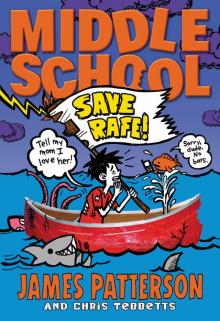 Save Rafe!
Save Rafe!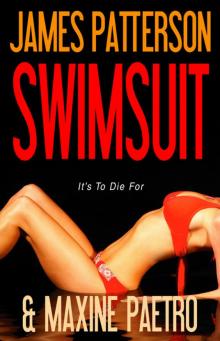 Swimsuit
Swimsuit Sam's Letters to Jennifer
Sam's Letters to Jennifer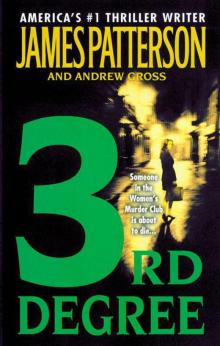 3rd Degree
3rd Degree Double Cross
Double Cross Judge & Jury
Judge & Jury Kiss the Girls
Kiss the Girls Second Honeymoon
Second Honeymoon Guilty Wives
Guilty Wives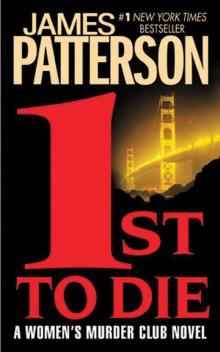 1st to Die
1st to Die NYPD Red 4
NYPD Red 4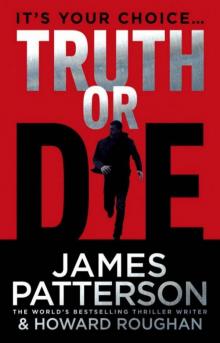 Truth or Die
Truth or Die Private Vegas
Private Vegas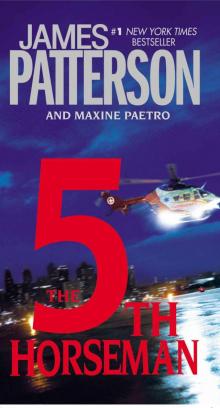 The 5th Horseman
The 5th Horseman 7th Heaven
7th Heaven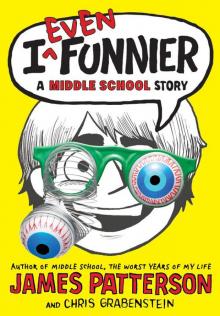 I Even Funnier
I Even Funnier Cross My Heart
Cross My Heart Let’s Play Make-Believe
Let’s Play Make-Believe Violets Are Blue
Violets Are Blue Zoo
Zoo Home Sweet Murder
Home Sweet Murder The Private School Murders
The Private School Murders Alex Cross, Run
Alex Cross, Run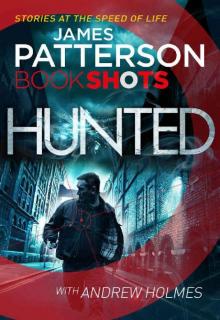 Hunted: BookShots
Hunted: BookShots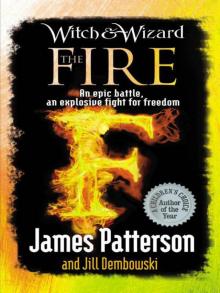 The Fire
The Fire Chase
Chase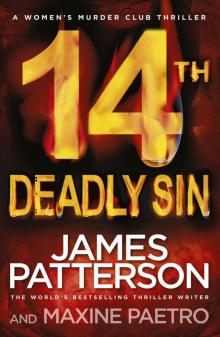 14th Deadly Sin
14th Deadly Sin Bloody Valentine
Bloody Valentine The 17th Suspect
The 17th Suspect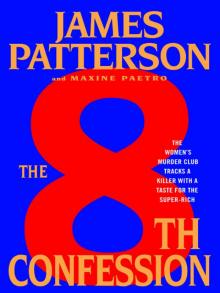 The 8th Confession
The 8th Confession 4th of July
4th of July The Angel Experiment
The Angel Experiment Crazy House
Crazy House School's Out - Forever
School's Out - Forever Suzanne's Diary for Nicholas
Suzanne's Diary for Nicholas Cross Justice
Cross Justice Maximum Ride Forever
Maximum Ride Forever The Thomas Berryman Number
The Thomas Berryman Number Honeymoon
Honeymoon The Medical Examiner
The Medical Examiner Killer Chef
Killer Chef Private Princess
Private Princess Private Games
Private Games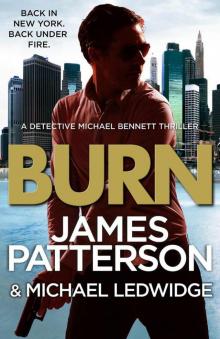 Burn
Burn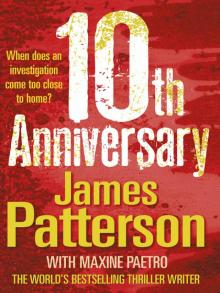 10th Anniversary
10th Anniversary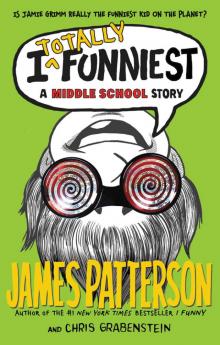 I Totally Funniest: A Middle School Story
I Totally Funniest: A Middle School Story Taking the Titanic
Taking the Titanic The Lawyer Lifeguard
The Lawyer Lifeguard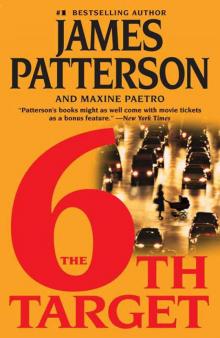 The 6th Target
The 6th Target Cross the Line
Cross the Line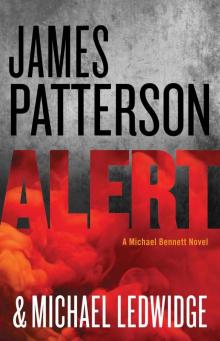 Alert
Alert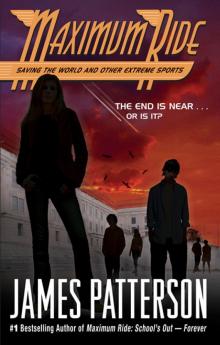 Saving the World and Other Extreme Sports
Saving the World and Other Extreme Sports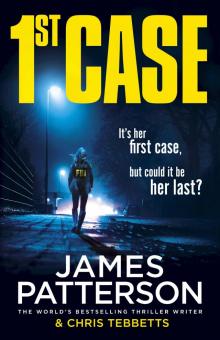 1st Case
1st Case Unlucky 13
Unlucky 13 Haunted
Haunted Cross
Cross Lost
Lost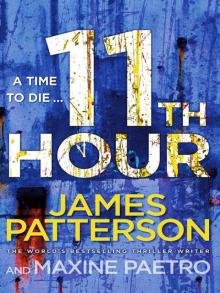 11th Hour
11th Hour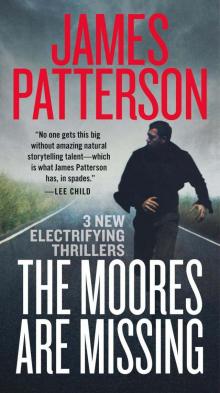 Bookshots Thriller Omnibus
Bookshots Thriller Omnibus Target: Alex Cross
Target: Alex Cross Hope to Die
Hope to Die The Noise
The Noise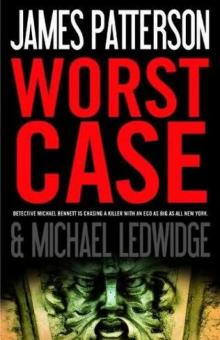 Worst Case
Worst Case Dog's Best Friend
Dog's Best Friend Nevermore: The Final Maximum Ride Adventure
Nevermore: The Final Maximum Ride Adventure I Funny: A Middle School Story
I Funny: A Middle School Story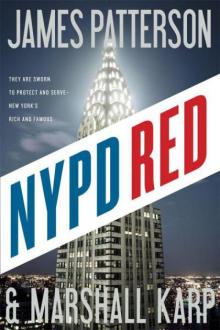 NYPD Red
NYPD Red Till Murder Do Us Part
Till Murder Do Us Part Black & Blue
Black & Blue Fang
Fang Liar Liar
Liar Liar The Inn
The Inn Sundays at Tiffany's
Sundays at Tiffany's Middle School: Escape to Australia
Middle School: Escape to Australia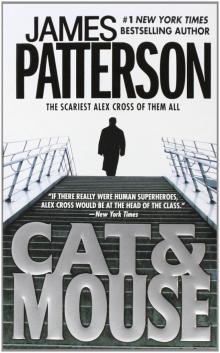 Cat and Mouse
Cat and Mouse Instinct
Instinct The Black Book
The Black Book London Bridges
London Bridges Toys
Toys The Last Days of John Lennon
The Last Days of John Lennon Roses Are Red
Roses Are Red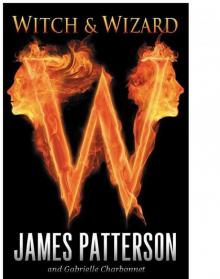 Witch & Wizard
Witch & Wizard The Dolls
The Dolls The Christmas Wedding
The Christmas Wedding The River Murders
The River Murders The 18th Abduction
The 18th Abduction The 19th Christmas
The 19th Christmas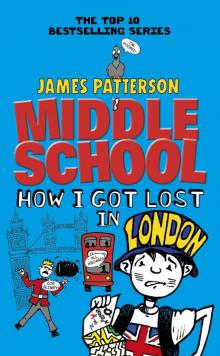 Middle School: How I Got Lost in London
Middle School: How I Got Lost in London Just My Rotten Luck
Just My Rotten Luck Red Alert
Red Alert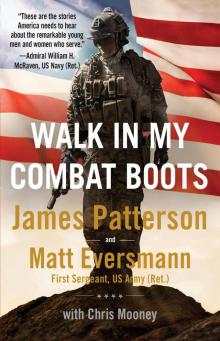 Walk in My Combat Boots
Walk in My Combat Boots Three Women Disappear
Three Women Disappear 21st Birthday
21st Birthday All-American Adventure
All-American Adventure Becoming Muhammad Ali
Becoming Muhammad Ali The Murder of an Angel
The Murder of an Angel The 13-Minute Murder
The 13-Minute Murder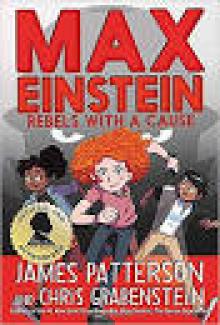 Rebels With a Cause
Rebels With a Cause The Trial
The Trial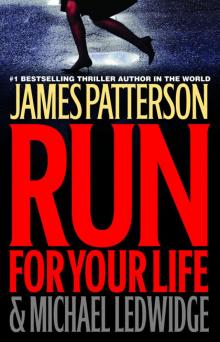 Run for Your Life
Run for Your Life The House Next Door
The House Next Door NYPD Red 2
NYPD Red 2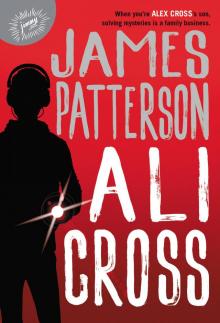 Ali Cross
Ali Cross The Big Bad Wolf
The Big Bad Wolf Middle School: My Brother Is a Big, Fat Liar
Middle School: My Brother Is a Big, Fat Liar Private Paris
Private Paris Miracle on the 17th Green
Miracle on the 17th Green The People vs. Alex Cross
The People vs. Alex Cross The Beach House
The Beach House Cross Kill
Cross Kill Dog Diaries
Dog Diaries The President's Daughter
The President's Daughter Happy Howlidays
Happy Howlidays Detective Cross
Detective Cross The Paris Mysteries
The Paris Mysteries Watch the Skies
Watch the Skies 113 Minutes
113 Minutes Alex Cross's Trial
Alex Cross's Trial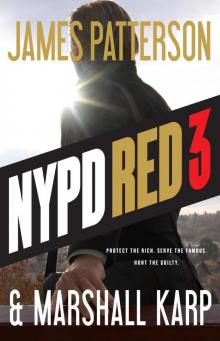 NYPD Red 3
NYPD Red 3 Hush Hush
Hush Hush Now You See Her
Now You See Her Merry Christmas, Alex Cross
Merry Christmas, Alex Cross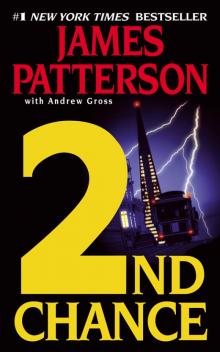 2nd Chance
2nd Chance Private Royals
Private Royals Two From the Heart
Two From the Heart Max
Max I, Funny
I, Funny Blindside (Michael Bennett)
Blindside (Michael Bennett) Sophia, Princess Among Beasts
Sophia, Princess Among Beasts Armageddon
Armageddon Don't Blink
Don't Blink NYPD Red 6
NYPD Red 6 The First Lady
The First Lady Texas Outlaw
Texas Outlaw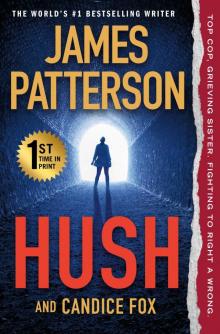 Hush
Hush Beach Road
Beach Road Private Berlin
Private Berlin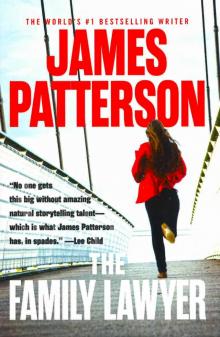 The Family Lawyer
The Family Lawyer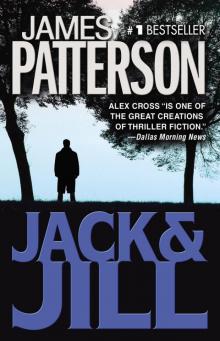 Jack & Jill
Jack & Jill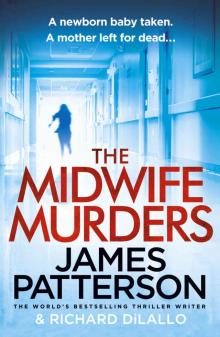 The Midwife Murders
The Midwife Murders Middle School: Rafe's Aussie Adventure
Middle School: Rafe's Aussie Adventure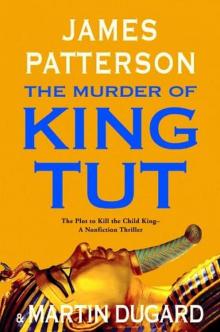 The Murder of King Tut: The Plot to Kill the Child King
The Murder of King Tut: The Plot to Kill the Child King First Love
First Love The Dangerous Days of Daniel X
The Dangerous Days of Daniel X Hawk
Hawk Private Delhi
Private Delhi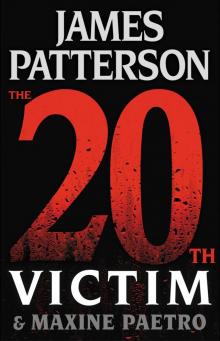 The 20th Victim
The 20th Victim The Shadow
The Shadow Katt vs. Dogg
Katt vs. Dogg The Palm Beach Murders
The Palm Beach Murders 2 Sisters Detective Agency
2 Sisters Detective Agency Humans, Bow Down
Humans, Bow Down You've Been Warned
You've Been Warned Cradle and All
Cradle and All 20th Victim: (Women’s Murder Club 20) (Women's Murder Club)
20th Victim: (Women’s Murder Club 20) (Women's Murder Club)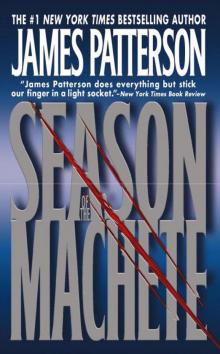 Season of the Machete
Season of the Machete Woman of God
Woman of God Mary, Mary
Mary, Mary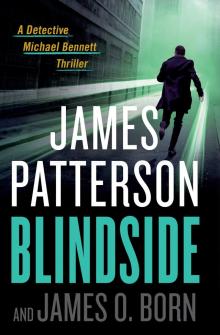 Blindside
Blindside Invisible
Invisible The Chef
The Chef Revenge
Revenge See How They Run
See How They Run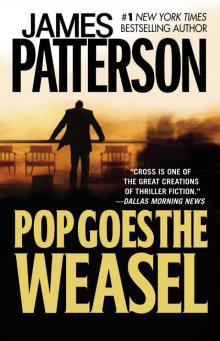 Pop Goes the Weasel
Pop Goes the Weasel 15th Affair
15th Affair Middle School: Get Me Out of Here!
Middle School: Get Me Out of Here!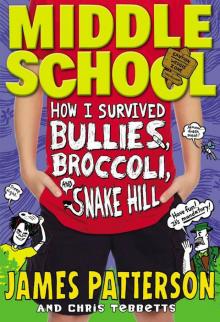 Middle School: How I Survived Bullies, Broccoli, and Snake Hill
Middle School: How I Survived Bullies, Broccoli, and Snake Hill From Hero to Zero - Chris Tebbetts
From Hero to Zero - Chris Tebbetts G'day, America
G'day, America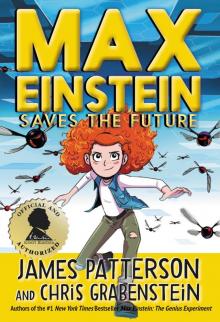 Max Einstein Saves the Future
Max Einstein Saves the Future The Cornwalls Are Gone
The Cornwalls Are Gone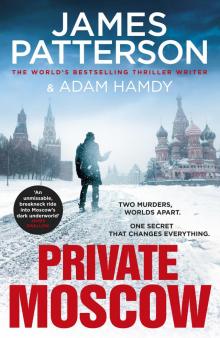 Private Moscow
Private Moscow Two Schools Out - Forever
Two Schools Out - Forever Hollywood 101
Hollywood 101 Deadly Cargo: BookShots
Deadly Cargo: BookShots 21st Birthday (Women's Murder Club)
21st Birthday (Women's Murder Club) The Sky Is Falling
The Sky Is Falling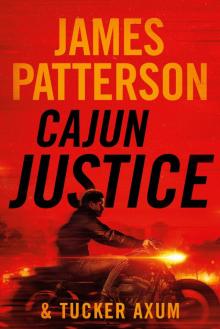 Cajun Justice
Cajun Justice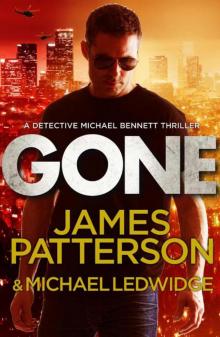 Bennett 06 - Gone
Bennett 06 - Gone The House of Kennedy
The House of Kennedy Waterwings
Waterwings Murder is Forever, Volume 2
Murder is Forever, Volume 2 Maximum Ride 02
Maximum Ride 02 Treasure Hunters--The Plunder Down Under
Treasure Hunters--The Plunder Down Under Private Royals: BookShots (A Private Thriller)
Private Royals: BookShots (A Private Thriller) After the End
After the End Private India: (Private 8)
Private India: (Private 8) Escape to Australia
Escape to Australia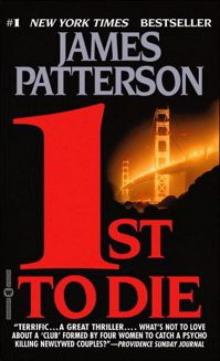 WMC - First to Die
WMC - First to Die Boys Will Be Boys
Boys Will Be Boys The Red Book
The Red Book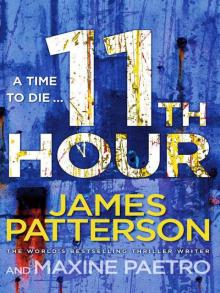 11th hour wmc-11
11th hour wmc-11 Hidden
Hidden You've Been Warned--Again
You've Been Warned--Again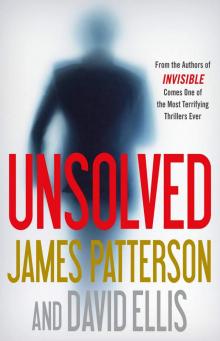 Unsolved
Unsolved Pottymouth and Stoopid
Pottymouth and Stoopid Hope to Die: (Alex Cross 22)
Hope to Die: (Alex Cross 22) The Moores Are Missing
The Moores Are Missing Black & Blue: BookShots (Detective Harriet Blue Series)
Black & Blue: BookShots (Detective Harriet Blue Series) Airport - Code Red: BookShots
Airport - Code Red: BookShots Kill or Be Killed
Kill or Be Killed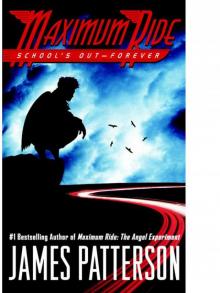 School's Out--Forever
School's Out--Forever When the Wind Blows
When the Wind Blows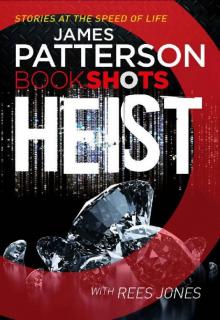 Heist: BookShots
Heist: BookShots Murder of Innocence (Murder Is Forever)
Murder of Innocence (Murder Is Forever) Red Alert_An NYPD Red Mystery
Red Alert_An NYPD Red Mystery Malicious
Malicious Scott Free
Scott Free The Summer House
The Summer House French Kiss
French Kiss Treasure Hunters
Treasure Hunters Murder Is Forever, Volume 1
Murder Is Forever, Volume 1 Secret of the Forbidden City
Secret of the Forbidden City Cross the Line: (Alex Cross 24)
Cross the Line: (Alex Cross 24)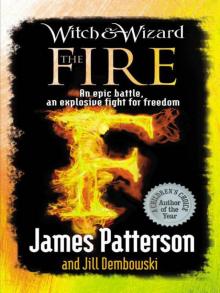 Witch & Wizard: The Fire
Witch & Wizard: The Fire![Women's Murder Club [06] The 6th Target Read online](http://i1.bookreadfree.com/i/03/24/womens_murder_club_06_the_6th_target_preview.jpg) Women's Murder Club [06] The 6th Target
Women's Murder Club [06] The 6th Target Cross My Heart ac-21
Cross My Heart ac-21 Alex Cross’s Trial ак-15
Alex Cross’s Trial ак-15 Alex Cross 03 - Jack & Jill
Alex Cross 03 - Jack & Jill Liar Liar: (Harriet Blue 3) (Detective Harriet Blue Series)
Liar Liar: (Harriet Blue 3) (Detective Harriet Blue Series) Cross Country ак-14
Cross Country ак-14 Honeymoon h-1
Honeymoon h-1 Maximum Ride: The Angel Experiment
Maximum Ride: The Angel Experiment The Big Bad Wolf ак-9
The Big Bad Wolf ак-9 Dead Heat: BookShots (Book Shots)
Dead Heat: BookShots (Book Shots) Kill and Tell
Kill and Tell Avalanche
Avalanche Robot Revolution
Robot Revolution Public School Superhero
Public School Superhero 12th of Never
12th of Never Max: A Maximum Ride Novel
Max: A Maximum Ride Novel All-American Murder
All-American Murder Murder Games
Murder Games Robots Go Wild!
Robots Go Wild! My Life Is a Joke
My Life Is a Joke Private: Gold
Private: Gold Demons and Druids
Demons and Druids Jacky Ha-Ha
Jacky Ha-Ha Postcard killers
Postcard killers Princess: A Private Novel
Princess: A Private Novel Kill Alex Cross ac-18
Kill Alex Cross ac-18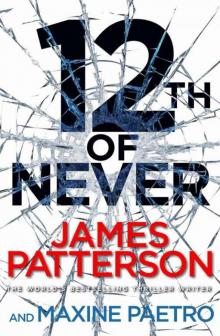 12th of Never wmc-12
12th of Never wmc-12 The Murder of King Tut
The Murder of King Tut I Totally Funniest
I Totally Funniest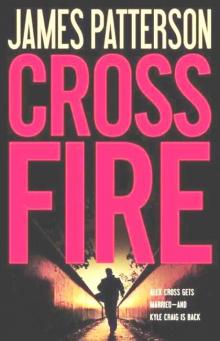 Cross Fire ак-17
Cross Fire ак-17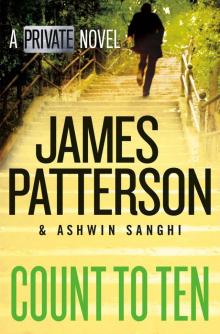 Count to Ten
Count to Ten![Women's Murder Club [10] 10th Anniversary Read online](http://i1.bookreadfree.com/i1/03/30/womens_murder_club_10_10th_anniversary_preview.jpg) Women's Murder Club [10] 10th Anniversary
Women's Murder Club [10] 10th Anniversary![Women's Murder Club [01] 1st to Die Read online](http://i1.bookreadfree.com/i1/03/31/womens_murder_club_01_1st_to_die_preview.jpg) Women's Murder Club [01] 1st to Die
Women's Murder Club [01] 1st to Die I, Michael Bennett mb-5
I, Michael Bennett mb-5 Nooners
Nooners![Women's Murder Club [08] The 8th Confession Read online](http://i1.bookreadfree.com/i1/04/03/womens_murder_club_08_the_8th_confession_preview.jpg) Women's Murder Club [08] The 8th Confession
Women's Murder Club [08] The 8th Confession Private jm-1
Private jm-1 Treasure Hunters: Danger Down the Nile
Treasure Hunters: Danger Down the Nile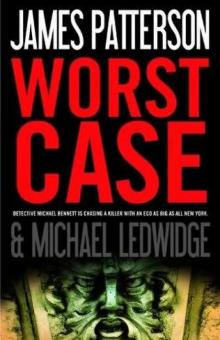 Worst Case mb-3
Worst Case mb-3 Don’t Blink
Don’t Blink The Games
The Games The Medical Examiner: A Women's Murder Club Story
The Medical Examiner: A Women's Murder Club Story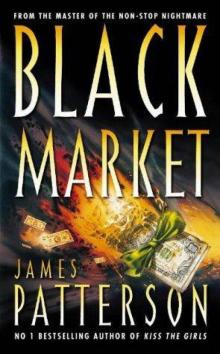 Black Market
Black Market Gone mb-6
Gone mb-6![Women's Murder Club [02] 2nd Chance Read online](http://i1.bookreadfree.com/i1/04/04/womens_murder_club_02_2nd_chance_preview.jpg) Women's Murder Club [02] 2nd Chance
Women's Murder Club [02] 2nd Chance French Twist
French Twist Kenny Wright
Kenny Wright Manhunt: A Michael Bennett Story
Manhunt: A Michael Bennett Story Cross Kill: An Alex Cross Story
Cross Kill: An Alex Cross Story Confessions of a Murder Suspect td-1
Confessions of a Murder Suspect td-1 Second Honeymoon h-2
Second Honeymoon h-2 Chase_A BookShot_A Michael Bennett Story
Chase_A BookShot_A Michael Bennett Story Confessions: The Paris Mysteries
Confessions: The Paris Mysteries![Women's Murder Club [09] The 9th Judgment Read online](http://i1.bookreadfree.com/i2/04/08/womens_murder_club_09_the_9th_judgment_preview.jpg) Women's Murder Club [09] The 9th Judgment
Women's Murder Club [09] The 9th Judgment Absolute Zero
Absolute Zero Nevermore: The Final Maximum Ride Adventure mr-8
Nevermore: The Final Maximum Ride Adventure mr-8 Angel: A Maximum Ride Novel mr-7
Angel: A Maximum Ride Novel mr-7 Juror #3
Juror #3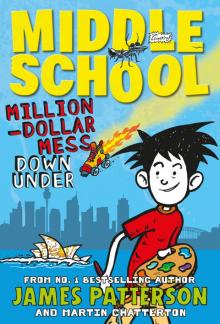 Million-Dollar Mess Down Under
Million-Dollar Mess Down Under The Verdict: BookShots (A Jon Roscoe Thriller)
The Verdict: BookShots (A Jon Roscoe Thriller) The President Is Missing: A Novel
The President Is Missing: A Novel![Women's Murder Club [04] 4th of July Read online](http://i1.bookreadfree.com/i2/04/06/womens_murder_club_04_4th_of_july_preview.jpg) Women's Murder Club [04] 4th of July
Women's Murder Club [04] 4th of July The Hostage: BookShots (Hotel Series)
The Hostage: BookShots (Hotel Series) $10,000,000 Marriage Proposal
$10,000,000 Marriage Proposal Diary of a Succubus
Diary of a Succubus Unbelievably Boring Bart
Unbelievably Boring Bart Angel: A Maximum Ride Novel
Angel: A Maximum Ride Novel Stingrays
Stingrays Confessions: The Private School Murders
Confessions: The Private School Murders Stealing Gulfstreams
Stealing Gulfstreams![Women's Murder Club [05] The 5th Horseman Read online](http://i1.bookreadfree.com/i2/04/05/womens_murder_club_05_the_5th_horseman_preview.jpg) Women's Murder Club [05] The 5th Horseman
Women's Murder Club [05] The 5th Horseman Zoo 2
Zoo 2 Jack Morgan 02 - Private London
Jack Morgan 02 - Private London Treasure Hunters--Quest for the City of Gold
Treasure Hunters--Quest for the City of Gold The Christmas Mystery
The Christmas Mystery Murder in Paradise
Murder in Paradise Kidnapped: BookShots (A Jon Roscoe Thriller)
Kidnapped: BookShots (A Jon Roscoe Thriller) Triple Homicide_Thrillers
Triple Homicide_Thrillers 16th Seduction: (Women’s Murder Club 16) (Women's Murder Club)
16th Seduction: (Women’s Murder Club 16) (Women's Murder Club)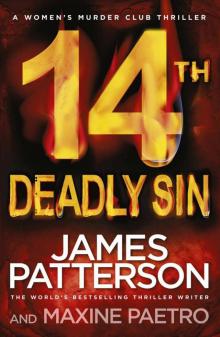 14th Deadly Sin: (Women’s Murder Club 14)
14th Deadly Sin: (Women’s Murder Club 14) Texas Ranger
Texas Ranger Witch & Wizard 04 - The Kiss
Witch & Wizard 04 - The Kiss![Women's Murder Club [03] 3rd Degree Read online](http://i1.bookreadfree.com/i2/04/12/womens_murder_club_03_3rd_degree_preview.jpg) Women's Murder Club [03] 3rd Degree
Women's Murder Club [03] 3rd Degree Break Point: BookShots
Break Point: BookShots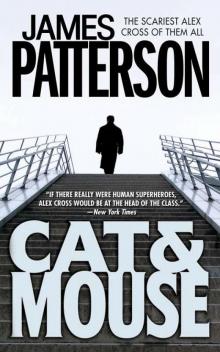 Alex Cross 04 - Cat & Mouse
Alex Cross 04 - Cat & Mouse Maximum Ride
Maximum Ride Fifty Fifty: (Harriet Blue 2) (Detective Harriet Blue Series)
Fifty Fifty: (Harriet Blue 2) (Detective Harriet Blue Series) Alex Cross 02 - Kiss the Girls
Alex Cross 02 - Kiss the Girls The President Is Missing
The President Is Missing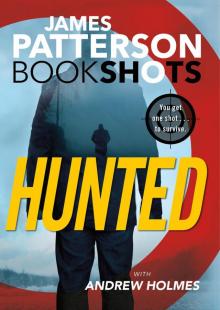 Hunted
Hunted House of Robots
House of Robots Dangerous Days of Daniel X
Dangerous Days of Daniel X Tick Tock mb-4
Tick Tock mb-4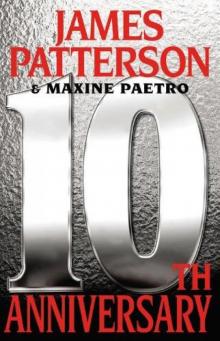 10th Anniversary wmc-10
10th Anniversary wmc-10 The Exile
The Exile Private Games-Jack Morgan 4 jm-4
Private Games-Jack Morgan 4 jm-4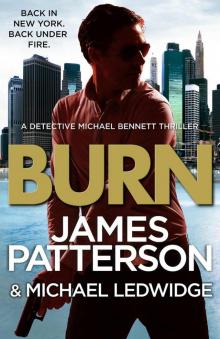 Burn: (Michael Bennett 7)
Burn: (Michael Bennett 7) Laugh Out Loud
Laugh Out Loud The People vs. Alex Cross: (Alex Cross 25)
The People vs. Alex Cross: (Alex Cross 25)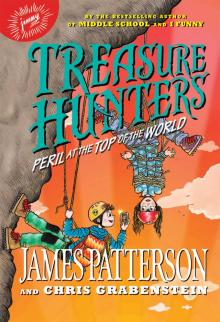 Peril at the Top of the World
Peril at the Top of the World I Funny TV
I Funny TV Merry Christmas, Alex Cross ac-19
Merry Christmas, Alex Cross ac-19 #1 Suspect jm-3
#1 Suspect jm-3 Fang: A Maximum Ride Novel
Fang: A Maximum Ride Novel![Women's Murder Club [07] 7th Heaven Read online](http://i1.bookreadfree.com/i2/04/13/womens_murder_club_07_7th_heaven_preview.jpg) Women's Murder Club [07] 7th Heaven
Women's Murder Club [07] 7th Heaven The End
The End